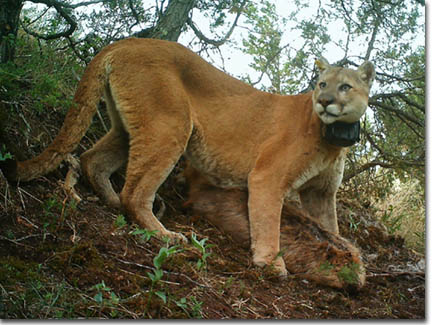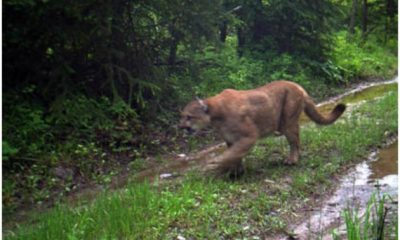Adventure
Cougar Sightings: Fact Or Fiction?
We all know that state wildlife agencies fib about the presence of mountain lions.
If you live in a state that used to have a population of cougars and still has a lot of suitable cougar habitat, then you know the story: Your state wildlife agency is swearing up and down that there are no mountain lions in your state. They will claim this in the face of trail cam video, in the face of genetic testing, and quite possibly while a mountain lion is in their face, eating it.
Why do they do this? Well, if they admit that the big cats are present, then the state has to come up with a management plan. It’s like asking a DMV employee to look at the receipt that proves you already paid the ticket. But if you’ve ever wondered what the state wildlife agency’s side of the story (besides “Nuh-uh, and it’s time for my break”) sounds like, here’s the Kentucky Department of Fish & Wildlife to explain why they ignore so many reports.
~~~~~~~~~~~~~~~~~~~~~~~~~~~~~~~~~~~~~~~~~~~~~~~~~~~~~~~~~~~~~~~~~~~`
In 2011, the U.S. Fish and Wildlife Service declared the eastern cougar extinct. Based on its extensive research, the Service concluded this subspecies of big cats had disappeared from the east by the 1930s.
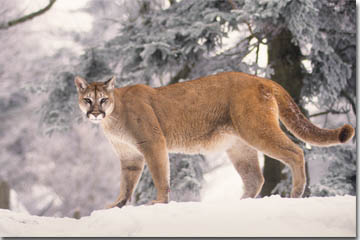 Photo courtesy of Bill Lea
Photo courtesy of Bill Lea
While mountain lions were once common in Kentucky, research shows the state has not supported a wild population of mountain lions for more than a century. In the landmark 1974 book “Mammals of Kentucky,” authors Roger W. Barbour and Wayne H. Davis noted there were no valid records of mountain lions in the state after 1899.
Currently, the nearest wild population of mountain lions resides in Nebraska, more than 900 miles from Kentucky. A small population of panthers – fewer than 200 animals – also lives in southwestern Florida.
The Kentucky Department of Fish and Wildlife Resources receives reports each year of mountain lions roaming the state. However, there have been only two confirmations: a female kitten struck by a car in Floyd County in June 1997, and an adult male mountain lion dispatched by a Kentucky Fish and Wildlife conservation officer in Bourbon County on December 15, 2014. DNA testing revealed the kitten had South American ancestry, leading to the conclusion that it was of captive origin. Kentucky Fish and Wildlife biologists rely on physical, verifiable evidence to assess mountain lion sightings in the state.
The increasing number of big cat reports in the state coincides with the return of the bobcat to Kentucky’s landscape. Bobcats, which were considered rare as late as 1974, have increased in range and abundance throughout Kentucky. They are now found in every county in the state. Bobcats may have solid brown coats, which can cause people to misidentify them when glimpsed in low light. In addition, it is no coincidence that reports of mountain lions have increased with the popularity of the internet- which enables the unintentional and intentional sharing of inaccurate information.
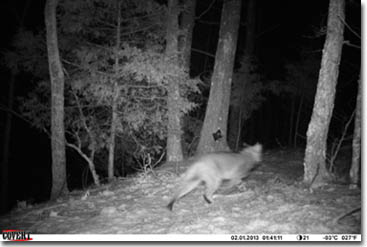
Kentucky Department of Fish and Wildlife Resources

Photo courtesy of Missouri Department of Conservation
A good indicator of the presence of mountain lions is the number of animals killed on the road. In Florida, with its small population of panthers, about two dozen of big cats are killed on the road each year. Kentucky’s tally is the one female kitten struck by a vehicle in Floyd County in 1997, and that animal was of captive origin.
The rising popularity of motion-activated trail cameras deployed year-round throughout Kentucky’s woods and fields have yet to produce a confirmed image of a mountain lion in the state. Likewise, more than a quarter million hunters take to the state’s woods and fields each year for deer season and no one has taken a mountain lion. Several years ago, a hunter shot what he said was a mountain lion with his bow. DNA tests on the recovered arrow revealed that he had actually shot a bobcat.
Kentucky Fish and Wildlife biologists are monitoring the expansion of cougar populations from the western U.S. To help protect the public from escaped captive animals, the department has banned the possession of mountain lions as pets since 2005.

Facts:
-
- The scientific name for a mountain lion is Puma concolor, which loosely translates to describe a cat with one color.
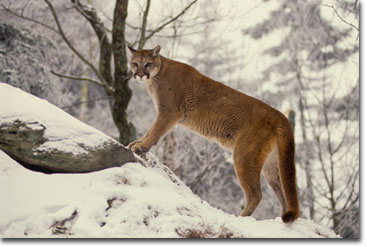 Photo courtesy of Bill Lea
Photo courtesy of Bill Lea
- The mountain lion has many common names including cougar, puma, catamount, panther, and ghost cat.
- Adults typically weigh 90-160 pounds with a robust tail that can be one-third as long as the cat’s body.
- Mountain lions are large cats with short tawny brown fur and a lighter white underbelly.
- Animals commonly misidentified as mountain lions include coyotes, bobcats, housecats, dogs and white-tailed deer.
- “Black panthers” exist only as the melanistic (black) phases of the leopard (Panthera pardus) in Africa and Asia, and the jaguar (Panthera onca) of Mexico and Central and South America.
- The nearest known reproducing populations of western mountain lions are in Nebraska, Wyoming, Colorado, North Dakota, South Dakota and Texas.
- In recent years, young male mountain lions dispersing from their home ranges in search of new territory have been confirmed in Arkansas, Connecticut, Illinois, Kansas, and Missouri.
- The presence of a lone mountain lion does not mean the area has an established population.
-

 Hunting1 month ago
Hunting1 month agoDrain the Swamp: Corruption Scandal at Washington State’s Fish & Wildlife
-

 Adventure2 weeks ago
Adventure2 weeks agoDoes the “Big Beautiful Bill” Have a Public-Lands Wart?
-
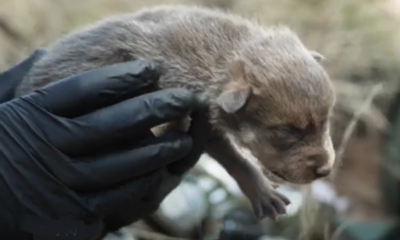
 Adventure4 weeks ago
Adventure4 weeks agoHowling in Cuckoo: How Mexican Wolves are Fostered
-

 Hunting2 months ago
Hunting2 months agoHow to Outwit the Merriam’s Turkey
-

 Adventure2 months ago
Adventure2 months agoGoing Rodeo! BANISH Named the Professional Rodeo Cowboys’ Official Suppressor
-

 Adventure6 days ago
Adventure6 days agoU.S. Bighorn Sheep Going Home to Canada
-

 Adventure3 weeks ago
Adventure3 weeks agoYour Dream Hunt Could Be a Movie & Leupold Can Help

